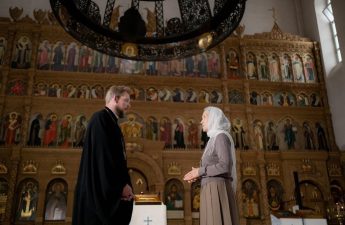Jacqueline Woodson’s Another Brooklyn is a powerful exploration of friendship, identity, and memory, set against the vibrant backdrop of 1970s Brooklyn. This lyrical novel captures the essence of adolescence and the enduring bonds of female friendship, resonating deeply with readers. Woodson’s return to adult fiction after two decades is a triumphant celebration of storytelling and the human experience, making Another Brooklyn a must-read for literary enthusiasts.
Overview of the Book
Another Brooklyn is a poignant and lyrical novel by Jacqueline Woodson, exploring themes of friendship, identity, and memory. Set in 1970s Brooklyn, the story follows August and her close-knit group of friends as they navigate adolescence and the challenges of growing up. Woodson’s prose is evocative, capturing the vibrancy of the neighborhood and the deep bonds between the characters. The novel is a meditation on how place and relationships shape who we become, making it a compelling read for those interested in coming-of-age stories and literary fiction.
Author Background: Jacqueline Woodson
Jacqueline Woodson is an award-winning author known for her profound exploration of identity, race, and human connections. As the Young People’s Poet Laureate (2015-2017), she has captivated readers with her lyrical prose and nuanced storytelling. Woodson’s work spans multiple genres, from poetry to young adult fiction, earning her numerous accolades, including the National Book Award. Another Brooklyn marks her triumphant return to adult fiction after two decades, solidifying her reputation as a masterful storyteller whose work resonates across generations and genres.
Significance of the Title “Another Brooklyn”
The title Another Brooklyn reflects the duality of the borough as both a physical place and a metaphorical space of memory and identity. It captures the essence of a neighborhood in flux, where change and nostalgia intertwine. The word “another” suggests multiple layers of experience, echoing the diverse perspectives of its characters and the shifting cultural landscape. Woodson’s use of the title underscores Brooklyn’s role as a character in itself, embodying the transformative power of place and memory in shaping individual and collective narratives.
Book Background and Publication Details
Another Brooklyn is Jacqueline Woodson’s first adult novel in 20 years, published by Amistad in 2016. It became a National Book Award finalist and a New York Times bestseller.
Publishing House and Year of Publication
Another Brooklyn was published by Amistad, an imprint of HarperCollins, in 2016. This marked Jacqueline Woodson’s return to adult fiction after a 20-year hiatus. The novel’s release was met with critical acclaim, becoming a National Book Award finalist and a New York Times bestseller. Its success underscored Woodson’s mastery of lyrical prose and her ability to craft stories that resonate deeply with readers. The book’s availability in various formats, including PDF, has made it accessible to a wide audience.
Genre and Target Audience
Another Brooklyn falls under the genre of literary fiction, blending elements of contemporary prose and lyrical memoir. It primarily appeals to adult readers who appreciate coming-of-age narratives and explorations of identity. The novel’s themes of friendship, memory, and cultural identity resonate with a wide audience. Its availability in PDF and other digital formats enhances its accessibility, making it a cherished read for both young adults and literary enthusiasts.
Awards and Recognition
Jacqueline Woodson’s Another Brooklyn garnered significant acclaim, becoming a finalist for the 2016 National Book Award. It was also named one of Time Magazine’s Top 10 Novels of 2016. The novel’s lyrical prose and poignant storytelling earned it a place on The New York Times bestseller list. These recognitions highlight Woodson’s mastery of contemporary literature and solidify her reputation as a compelling voice in American storytelling, making Another Brooklyn a celebrated work in modern literary circles.

Plot Summary and Key Themes
Another Brooklyn follows August’s return to her childhood neighborhood after her father’s death, triggering memories of her youth. The novel explores themes of friendship, identity, and coming-of-age in a changing Brooklyn, delving into grief and the power of memory.
Central Narrative and Characters
The narrative centers on August, an anthropologist revisiting her childhood in 1970s Brooklyn after her father’s death. Flashbacks reveal her bond with Sylvia, Gigi, and Ange, four girls navigating adolescence. Their friendship becomes a lifeline amid personal struggles and societal changes. August’s journey explores identity, loss, and the enduring power of their connection. The characters’ growth and interactions shape the novel’s emotional core, highlighting how their shared experiences define them. Woodson masterfully weaves their stories into a tapestry of resilience and transformation.
Themes of Friendship and Identity
At the heart of Another Brooklyn lies the transformative power of friendship and the struggle to define oneself. August and her friends—Sylvia, Gigi, and Ange—navigate the challenges of adolescence, their bond serving as both a refuge and a mirror. Woodson explores how these relationships shape their identities, offering a sense of belonging in a rapidly changing world. The novel underscores the enduring impact of these connections, revealing how friendship becomes a cornerstone of resilience and self-discovery. Through shared experiences, the characters find the strength to confront their futures.
Exploration of Grief and Memory
In Another Brooklyn, grief and memory are intertwined as August revisits her past after her father’s death. The novel captures the fragmented nature of memory through vignettes, reflecting August’s anthropological lens on loss. Woodson explores how cultural rituals and personal experiences shape perceptions of grief, weaving in elements of identity and belonging. August’s journey through her memories reveals the enduring impact of her childhood friendships and the ways in which memory both heals and haunts. The novel offers a poignant meditation on loss and the resilience of the human spirit.

Character Analysis
The novel delves into the lives of August, Sylvia, Gigi, and Ange, exploring their distinct personalities and the bonds that shape their journey through adolescence and adulthood.
August: The Protagonist
August, the protagonist, is a complex and deeply reflective character. As an anthropologist, she brings a unique perspective to her experiences, having studied funeral traditions across cultures. Her return to Brooklyn after her father’s death triggers a flood of memories about her childhood and friendships. August’s journey is one of self-discovery, as she navigates grief, identity, and the evolution of her relationships with Sylvia, Gigi, and Ange. Her story is a poignant exploration of how the past shapes the present, showcasing her resilience and growth.
Sylvia, Gigi, and Ange: The Circle of Friends
Sylvia, Gigi, and Ange form the core of August’s childhood friendships, each bringing unique personalities and perspectives to their bond. Sylvia’s boldness, Gigi’s quiet strength, and Ange’s creativity shape their shared experiences in Brooklyn. Together, they navigate the challenges of adolescence, fostering a sense of belonging and identity. Their relationship is marked by moments of joy, rivalry, and mutual support, reflecting the complexities of female friendship. Woodson portrays their dynamic as a lifeline, helping them survive the trials of growing up in a changing neighborhood.
Character Development and Growth
August and her friends undergo profound transformations as they navigate adolescence and adulthood. August’s journey from a vulnerable child to a reflective anthropologist highlights her growth. Sylvia, Gigi, and Ange each face their own struggles, evolving in response to identity crises and societal pressures. Woodson’s nuanced portrayal captures their resilience and vulnerability, illustrating how their shared experiences shape their individual paths. The novel’s non-linear structure and vivid prose emphasize the depth of their emotional and psychological development, creating a rich tapestry of human growth and understanding.
Setting: The Brooklyn Neighborhood
Brooklyn serves as both a backdrop and a character, shaping the lives of August and her friends. The 1970s neighborhood, with its vibrant culture and shifting landscapes, becomes a symbol of transformation and identity, deeply influencing the characters’ journeys and memories. Woodson’s vivid portrayal captures the essence of a changing Brooklyn, where history, community, and personal growth intertwine seamlessly.
Historical and Cultural Context
Set in 1970s Brooklyn, the novel captures the vibrant cultural tapestry of the borough during a period of significant social change. Woodson vividly portrays the African American community’s struggles and triumphs, reflecting the era’s racial tensions and economic shifts. The neighborhood’s transformation mirrors the characters’ journeys, as they navigate identity amidst a changing cultural landscape. Historical elements, such as migration trends and societal expectations, are woven into the narrative, enriching the story’s depth and resonance. Woodson’s portrayal of Brooklyn’s evolving culture highlights its impact on individual and collective identity.
Brooklyn as a Character in the Novel
Brooklyn emerges as a vivid character in the novel, shaping the lives of August and her friends. Woodson’s portrayal of the borough captures its vibrant cultural tapestry, from bustling streets to hidden corners. The neighborhood’s transformation over time mirrors the characters’ growth, as they navigate identity and belonging. Brooklyn’s evolving landscape becomes a metaphor for the girls’ journeys, reflecting their struggles and resilience. Its presence is deeply felt, influencing their experiences and memories, making it an integral part of the story’s emotional fabric.
Impact of Neighborhood Changes
The transformation of Brooklyn’s neighborhoods serves as a backdrop to the characters’ journeys, reflecting their personal growth and struggles. As the borough evolves, the girls face changes in their environment, which mirror their evolving identities. The shifting landscape becomes a symbol of their resilience and adaptation. These changes also underscore the passage of time, revealing how external transformations influence internal growth. The neighborhood’s evolution is deeply intertwined with the characters’ experiences, making it a poignant reflection of their lives and memories in Another Brooklyn.

Writing Style and Structure
Jacqueline Woodson’s Another Brooklyn features lyrical prose and poetic language, structured in vignettes. The non-linear narrative weaves memories and emotions, creating a vivid, layered story of adolescence and friendship.
Lyrical Prose and Poetic Language
Jacqueline Woodson’s Another Brooklyn is renowned for its lyrical prose and poetic language, which paints a vivid tapestry of memories. The novel’s language is sparse yet evocative, capturing the essence of adolescence and the complexity of human emotions. Woodson’s use of poetic imagery transforms the streets of Brooklyn into a character itself, weaving a narrative that resonates with both beauty and melancholy. This literary style has been praised for its ability to evoke powerful emotions and create a deeply immersive reading experience.
Use of Vignettes and Non-Linear Narrative
In Another Brooklyn, Jacqueline Woodson employs vignettes to craft a fragmented yet cohesive narrative, reflecting the fluidity of memory. The non-linear structure seamlessly weaves past and present, creating a mosaic of moments that define August’s journey. These concise, evocative scenes capture the essence of her friendships and the evolving Brooklyn landscape. Woodson’s use of vignettes allows for intimate storytelling, while the non-linear approach mirrors the way memories surface and intersect, enriching the novel’s emotional depth and thematic resonance.
Woodson’s Unique Storytelling Approach
Jacqueline Woodson’s storytelling in Another Brooklyn is marked by its lyrical prose and poetic language, which evokes a vivid sense of place and emotion. Her use of sparse, precise vignettes creates a fragmented yet cohesive narrative, mirroring the fluidity of memory. Woodson’s ability to weave personal and cultural histories into the fabric of the story underscores her unique voice. The novel’s non-linear structure and intimate tone reflect her background as a poet, blending elegance with raw emotional depth to craft a compelling and unforgettable reading experience.
Reception and Reviews
Critics and readers alike have praised Another Brooklyn for its lyrical prose and emotional depth, earning it a spot as a National Book Award finalist and a New York Times bestseller.
Critical Acclaim and Praise
Jacqueline Woodson’s Another Brooklyn has garnered widespread critical acclaim for its lyrical prose and emotional depth. The novel was a National Book Award finalist and became a New York Times bestseller. Critics praised its powerful storytelling, vivid characterization, and nuanced exploration of friendship, identity, and grief. Woodson’s ability to weave personal and cultural narratives resonated deeply with readers and reviewers alike, solidifying her reputation as a masterful storyteller. The book’s poetic language and evocative portrayal of Brooklyn further enhanced its reception, making it a standout work in contemporary literature.
Reader Responses and Ratings
Readers have embraced Another Brooklyn for its emotional depth and vivid storytelling, with many praising its ability to evoke nostalgia and reflection. The novel holds a high rating on platforms like Amazon and Goodreads, where readers highlight its lyrical prose and relatable themes. Many have noted how the book resonates personally, particularly in its portrayal of friendship and identity. The PDF version has also been popular, offering readers a convenient way to experience Woodson’s poignant narrative. Fans of literary fiction and coming-of-age stories have especially appreciated its universal appeal and introspective tone.
Controversies and Debates
While Another Brooklyn has received widespread acclaim, it has also sparked debates among readers and critics. Some have praised its lyrical prose and emotional depth, while others have criticized its non-linear narrative and sparse storytelling. Discussions about cultural authenticity and the portrayal of Brooklyn’s evolution have also emerged. The novel’s exploration of grief and identity has resonated deeply with many, though a few readers found the fragmented structure challenging. Despite these debates, the book remains a significant work in contemporary literature, fostering meaningful conversations about race, memory, and belonging.

Themes and Symbolism
Jacqueline Woodson’s Another Brooklyn delves into themes of friendship, identity, and memory, symbolizing the resilience of female bonds and the cultural tapestry of Brooklyn’s neighborhoods.
Adolescence as a Feat of Survival
In Another Brooklyn, Woodson portrays adolescence as a challenging journey of self-discovery and resilience. The protagonist, August, and her friends navigate the complexities of growing up in a rapidly changing Brooklyn. The novel highlights how their experiences shape their identities and strength, emphasizing the struggles and triumphs of youth. Through vivid vignettes, Woodson captures the essence of survival during this critical life phase, making it a powerful exploration of coming-of-age themes.
The Power of Interpersonal Connections
In Another Brooklyn, Jacqueline Woodson explores the profound impact of friendships on personal growth and resilience. The bonds between August, Sylvia, Gigi, and Ange serve as a lifeline, navigating the challenges of adolescence and identity. These relationships are portrayed as essential for survival, offering support, understanding, and a sense of belonging. Woodson vividly illustrates how interpersonal connections shape the characters’ lives, providing strength during times of change and uncertainty. The novel underscores the enduring power of human connections in overcoming life’s difficulties, making it a poignant reflection on friendship and unity.
Cultural and Historical Symbolism
Another Brooklyn is deeply rooted in the cultural fabric of 1970s Brooklyn, where the neighborhood itself serves as a symbol of transformation and resilience. Woodson weaves historical context into the narrative, reflecting the era’s social changes and the struggles of African American communities. The novel highlights the loss of cultural identity as Brooklyn evolves, mirroring the characters’ personal journeys. August’s anthropological perspective on funeral traditions adds another layer, showcasing how cultural practices bind communities together. This rich tapestry of history and culture enriches the story, making it a powerful exploration of time and place.

Comparison with Other Works
Jacqueline Woodson’s Another Brooklyn stands out as her first adult novel in twenty years, bridging her signature lyrical prose with a deeper exploration of identity and memory, distinguishing it from her earlier works while maintaining her unique storytelling voice.
Woodson’s Earlier Works
Jacqueline Woodson’s earlier works, such as If You Come Softly and Miracle’s Boys, established her as a masterful storyteller in the realm of Young Adult literature. These novels explored themes of identity, family, and social justice, resonating deeply with readers. Known for her poetic prose and emotional depth, Woodson’s earlier writing laid the groundwork for her nuanced exploration of human experiences. Her transition to adult fiction with Another Brooklyn marked a natural evolution, blending her signature style with a mature, introspective voice.
Similar Themes in Contemporary Literature
Themes of friendship, identity, and resilience in Another Brooklyn resonate with works by authors like Jesmyn Ward and Angie Thomas, who explore race, community, and personal growth. Contemporary literature often highlights the struggles of adolescence and the power of interpersonal bonds, mirroring Woodson’s vivid portrayal of female friendships. These shared themes underscore the universal human experiences of belonging, loss, and self-discovery, making Another Brooklyn a relatable and impactful read within the broader literary landscape.

Unique Elements of “Another Brooklyn”
Jacqueline Woodson’s Another Brooklyn stands out for its lyrical prose and poetic vignettes, which create a vivid tapestry of memory and experience. The novel’s non-linear structure and focus on female friendships offer a fresh perspective on coming-of-age themes. Woodson’s ability to weave cultural symbolism and historical context into the narrative adds depth, while the setting of Brooklyn becomes a character in itself. The blend of personal and universal themes, alongside its spare yet evocative language, makes Another Brooklyn a distinctive and memorable read in contemporary literature.
Resources and Availability
The Another Brooklyn PDF is widely available for download from various online platforms. Fans can purchase the book from major retailers or access free excerpts for preview.
PDF Version and Digital Formats
The Another Brooklyn PDF is accessible through various digital platforms, offering readers the convenience of downloading the novel in formats compatible with e-readers and mobile devices. Many websites provide direct links to the PDF version, allowing fans to easily access Jacqueline Woodson’s lyrical prose. Additionally, platforms like Amazon and Google Books offer digital copies, ensuring that readers can immerse themselves in August’s poignant journey and the vivid tapestry of 1970s Brooklyn from anywhere in the world. This accessibility has made the book a favorite among contemporary readers seeking both literary depth and modern convenience.
Where to Purchase the Book
Another Brooklyn is widely available for purchase through major online retailers like Amazon, Barnes & Noble, and Google Books. Readers can find both paperback and hardcover editions, as well as digital formats for e-readers. Independent bookstores also carry the novel, supporting local literary communities. Additionally, libraries offer borrowing options for those who prefer not to purchase. This accessibility ensures that Jacqueline Woodson’s poignant story reaches a broad audience, making it easy for readers to immerse themselves in August’s journey and the vibrant world of 1970s Brooklyn.
Free Excerpts and Previews
Readers can access free excerpts of Another Brooklyn through platforms like Amazon, Google Books, and preview features on online retailers. A PDF version is available for download via select websites, offering a glimpse into the novel’s lyrical prose. Additionally, Jacqueline Woodson’s official platforms and literary websites provide samples and teasers, allowing readers to experience the story’s emotional depth before purchasing. These previews highlight the vivid portrayal of friendship and identity, drawing readers into August’s poignant journey through 1970s Brooklyn.
Reading Guide and Discussion Topics
Explore Another Brooklyn through guided discussions on themes like friendship, identity, and grief. Analyze the vivid setting of 1970s Brooklyn and its impact on the narrative. Reflect on how August’s journey mirrors universal experiences of adolescence and self-discovery, making it a rich topic for book clubs and personal reflection.
Key Questions for Book Clubs
How does August’s journey reflect the challenges of adolescence and self-discovery in Another Brooklyn?
What role does the Brooklyn neighborhood play in shaping the characters’ identities?
How do the friendships between August, Sylvia, Gigi, and Ange evolve throughout the novel?
In what ways does Woodson use memory and grief to explore the human condition?
What cultural or historical references in the book resonate most with you?
How does the novel’s non-linear structure enhance its emotional impact?
What message do you think Woodson conveys about the power of interpersonal connections?
How does August’s anthropological perspective influence her storytelling?
What does the title Another Brooklyn symbolize in relation to the characters’ experiences?
How does the novel relate to your own experiences of friendship, loss, or identity?
These questions invite a deeper exploration of the novel’s themes and resonance.
Teaching the Novel in Classrooms
Another Brooklyn is a powerful tool for exploring themes of identity, friendship, and cultural heritage in educational settings. Educators can use its lyrical prose to teach literary devices and its non-linear structure to discuss narrative techniques. The novel aligns with ELA standards, fostering critical thinking and empathy. Classroom discussions can focus on August’s journey, the role of memory, and the impact of societal changes. PDF resources and teaching guides are available to support lesson planning, making it an ideal choice for high school and college curriculums.
Personal Reflections and Insights
Reading Another Brooklyn invites readers to reflect on their own experiences of friendship, loss, and identity. The novel’s vivid portrayal of adolescence in Brooklyn evokes a deep emotional connection, encouraging readers to consider how their own memories shape who they are. Woodson’s prose is both intimate and universal, making the story resonate long after the final page. The PDF format allows for easy access to this profound exploration of human connection and personal growth.
Another Brooklyn is a poignant and lyrical novel that explores themes of friendship, identity, and memory. Its emotional resonance and acclaim make it a standout work in contemporary literature, with the PDF version ensuring accessibility for readers worldwide.
Final Thoughts on the Novel
Jacqueline Woodson’s Another Brooklyn is a masterpiece of contemporary literature, offering a deeply personal and poignant exploration of female friendship and identity. The novel’s lyrical prose and non-linear narrative create a vivid tapestry of memories, transporting readers to the vibrant streets of 1970s Brooklyn. With its universal themes and emotional depth, Another Brooklyn leaves a lasting impact, solidifying its place as a must-read for anyone who has ever navigated the complexities of growing up and self-discovery. The PDF version ensures accessibility, allowing readers to experience Woodson’s brilliance in a convenient format.
Impact of “Another Brooklyn” on Readers
Another Brooklyn has left an indelible mark on readers, offering a deeply emotional and relatable journey through themes of friendship, identity, and memory. The novel’s vivid portrayal of Brooklyn’s cultural fabric and its characters’ struggles resonates universally, fostering reflection on personal growth and loss. With its accessible PDF format, the book reaches a wide audience, inviting readers to connect with August’s story and the enduring power of human connections. Its impact lies in its ability to evoke empathy and self-reflection, making it a memorable read for many.
Future of Jacqueline Woodson’s Work
Jacqueline Woodson’s future work promises to continue her legacy of profound storytelling. With the acclaim of Another Brooklyn, her ability to captivate readers with lyrical prose and nuanced themes remains unparalleled. Fans and critics eagerly anticipate her next projects, expecting further exploration of identity, culture, and human connection. Woodson’s unique voice ensures her continued relevance in contemporary literature, solidifying her place as a masterful storyteller for years to come.



